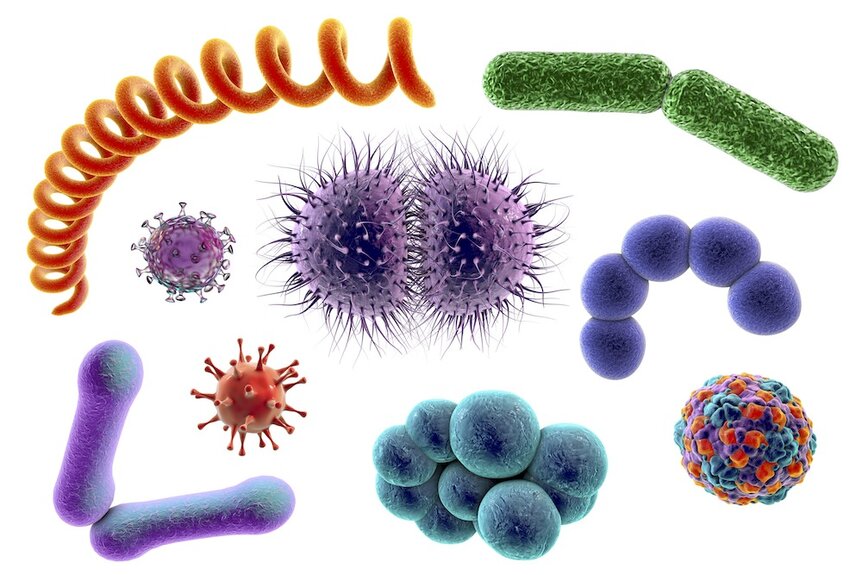Create a free profile to get unlimited access to exclusive videos, sweepstakes, and more!
Rage and disease carriers: The science behind '28 Weeks Later'
Any good therapist will tell you holding onto anger is dangerous. Doubly so if you hunger for flesh.

When 28 Days Later premiered in in 2002, it introduced the world to a new kind of zombies. They weren't the living dead we'd come to know and love from the works of George A. Romero, but they did have all the same flesh-eating proclivities, coupled with an undying rage-fueled violence. In the sequel 28 Weeks Later — which came out 15 years ago this week, in the U.S. — that rage broke out in a survivor settlement on the Isle of Dogs, with bloody consequences.
Reinventing zombies as living humans with an infectious disease rather than walking corpses brought them closer to reality. Disease is something we're all intimately familiar with and while rage is hopefully something you don't experience very often, it exists firmly within the emotional spectrum.
With all of that in mind, let's dissect the events of 28 Weeks Later.
RAGE!
Whether we like to admit it or not, anger is an ordinary part of human life. Whether your neighbor stole your newspaper again, the dog left a present for you on the kitchen floor, or you've been infected with a novel virus which has taken over your brain, getting angry is an ordinary response.
Scientists have identified the amygdala as the part of the brain responsible for pumping you full of some of your most intense emotions, including anger. When you're presented with a potentially dangerous stimuli, a couple things happen in your brain.
Let's say you hear a loud noise you weren't expecting. Your brain takes in that information and starts processes to quantify and formulate a response. While your prefrontal cortex is responsible for higher reasoning, working logically through a problem takes time you may not have if your life is in danger. A loud noise could be a gunshot, an intruder, or a kid selling cookies at your front door. The correct responses to those events are as varied as their potential outcomes — injury and death, or warm chocolate chips — but if it's the first kind of event, you need to act fast. That's where the amygdala comes in.
The amygdala sets off alarm bells and floods your body with hormones like adrenaline, so that you're ready for a fight. By the time your prefrontal cortex catches up to the action, your heart rate and blood pressure are up and you're ready to run or punch as the occasion demands.
Usually, hopefully, you're not actually in any danger and your higher reasoning mitigates your response. Otherwise, we might all be at each other's throats all the time. But what if your prefrontal cortex didn't attenuate that response?
Studies have shown that damage to the prefrontal cortex can result in increased anger and aggression. For instance, patients with lesions in the orbital prefrontal cortex may have trouble managing emotions resulting in higher aggression.
In order for the 28 Weeks Later disease to work as shown in the movie, resulting in people with a constant sense of rage, it would need to suppress the prefrontal cortex's ability to manage anger. If it ratcheted up the sensitivity of the amygdala, that would be even more effective. After all, emotions are all in your brain and your brain is a lump of meat susceptible to manipulation from people or pathogens.
DISEASE CARRIERS
When a new disease emerges, health workers and scientists work diligently to understand how and when it passes from one individual to the next. In the early stages, like the days or weeks after people start transforming into ravenous living zombies, we're largely dependent on apparent symptoms to know when someone is infectious. That becomes a complicated with the recognition that some people are asymptomatic carriers of a disease.
Part of the problem in 28 Weeks Later is that there are seemingly healthy people in the survivor compound carrying the rage virus and transmitting it to other people. Understanding how, why, and when that happens is critical to managing the spread of any disease, whether fiction or real.
For many diseases, there is a variable fraction of the population which becomes infected but never exhibits significant symptoms. For instance, according to one study, between 5 percent and 35 percent of the population may be infected with influenza without knowing it. In fact, it's entirely likely you're carrying asymptomatic infections of at least one disease right now. Human Cytomegalovirus, for instance, has a 100 percent infection rate in some countries and is thought to be between 40 and 70 percent in the global population. That's just one disease.
Why some people are asymptomatic to various diseases remains a mostly unanswered question in medicine. It may tie back to the desires — if we can call them that — of viruses. If a virus wants anything, it's simply to make copies of itself and spread, keeping its genetic information in the game. More or less, it wants the same things you do, just to be.
That means a virus needs to take a measured approach. A pathogen that becomes immediately fatal to its host doesn't last very long. They need people to host them, carry them around, and pass them along. Even dangerous and deadly diseases may pull that off by failing to exhibit symptoms in a certain percentage of the population.
If a significant enough portion of the population is asymptomatic, at a certain point, keeping a lid on your zombie rage virus might become impossible.




























